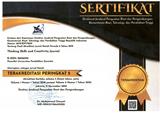The Emergence of Sects in Religion According to Richard Dawkins' Meme Theory
DOI:
https://doi.org/10.23887/jfi.v6i3.62839Keywords:
adaptation, meme theory, Dawkins, religious sectsAbstract
This research aims to provide an overview of the development of religion in general according to Richard Dawkins' Meme Theory. The problem in this study is the unique phenomenon of the way religion maintains its existence and is accepted by humans along with the times. Meme theory sees the phenomenon of religious development in society beginning with changes in phenomena that appear and then embedded in the human mind. The pattern of change will affect the decisions taken by humans. The pattern of change that occurs in the cultural aspect also occurs in the religious aspect in order to maintain its existence. Allows the emergence of various new sects in the name of a particular religion. This research uses qualitative research methods with a descriptive approach in explaining the emergence of religious schools in self-adjustment with the development of human life in a review of Dawkins meme thinking. The results of research describe Dawkins' reductionist thinking on the development of religion and present Dawkins' thought in viewing the emergence of schools in religion as a result of religious selection and adaptation to problems over time.
References
Atwood, Margaret. 2009. The Year Of The Flood. London: Bloomsbury Publishing.
Dawkins, Richard. 2006a. The God Delusion. London: Bantam Press.
———. 2006b. The Selfish Gene. New York: Oxford University Press.
Dennett, Daniel C. 2007. Breaking The Spell: Religion As A Natural Phenomenon. London: Penguin Book.
Durkheim, Emile. 2006. Sejarah Agama. Edited by Inyiak Ridwan Muzir. Yogyakarta: IRCiSoD.
Fadel, Achmad, and Hasan Mutjaba. 2020. “Pemikiran Ateisme Richard Dawkins: Studi Kritis Argument From Improbability God Delusion.” Kanz Philosophia 6 (2): 229–48.
Furseth, Inger, and Repstad. 2006. An Introduction To The Sociology of Religion. London: Asgathe Publishing Limited.
Kaelan. 2005. Metode Penelitian Kualitatif Bidang Filsafat. Yogyakarta: Paradigma.
Kimball, Charles. 2003. Kala Agama Jadi Bencana. Edited by Nurhadi. Bandung: Mizan Pustaka.
Nashir, Haedar. 1997. Agama Dan Krisis Kemanusiaan Modern. Yogyakarta: Pustaka Pelajar.
Ratner, Paul. 2016. “Richard Dawkins: Religion Is a Meme and Religious Beliefs Are ‘Mind-Parasites.’” Bigthink.Com. 2016. https://bigthink.com/surprising-science/social-viruses-may-be-shaping-the-american-elections-uniquely-threatening-modern-societies/.
Sabli, Muhammad. 2015. “Aliran-Aliran Teologi Dalam Islam (Perang Shiffin Dan Implikasinya Bagi Kemunculan Kelompok Khawarij Dan Murjiah).” Nur El-Islam 2 (1): 105–12.
Staddon, J E R. 2013. “Faith, Fact, and Behaviorism.” The Behavior Analyst 36 (2): 229–38. https://doi.org/10.1007/BF03392309.
Trueblood, David. 1987. Philosophy of Religion. Edited by H.M Rasjidi. Jakarta: PT Bulan Bintang.
Downloads
Published
Issue
Section
License
Copyright (c) 2023 Jurnal Filsafat Indonesia

This work is licensed under a Creative Commons Attribution-ShareAlike 4.0 International License.

Jurnal Filsafat Indonesia Undiksha is licensed under a Creative Commons Attribution-ShareAlike 4.0 International License.




